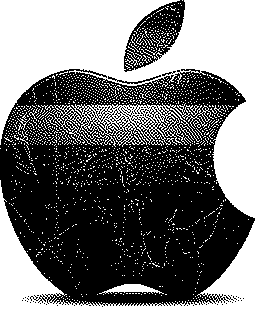27th Dec 2013 ADB, the Epitome of Early Apple

Lightning, the Epitome of Apple is one of the best things John Gruber has written all year.
The Lightning adapter epitomizes what makes Apple Apple. To the company’s fans, it provides elegance and convenience — it’s just so much nicer than micro-USB. To the company’s detractors, it exists to sell $29 proprietary adapters and to further enable Apple’s fetish for device thinness. Neither side is wrong.
Of course Apple wasn’t always this way.
In 1986 Apple needed a low-cost bus for connecting devices like keyboards and mice to its computers. The large headphone-style jack for the Lisa keyboard was too unreliable, and the phone-style jack used for the Macintosh 128K was too fragile. Apple needed a system that was rated for hundreds of insertions that could allow devices to be daisy-chained together without the need for hubs or complicated routing. It took Steve Wozniak one month on his own to come up with the answer, the Apple Desktop Bus.
In keeping with Apple’s 1980’s philosophy of industrial design, ADB was intended to be as simple to use as possible, while still being inexpensive to implement. Instead of inventing a new port and cable, a suitable connector was found in the form of the 4 pin mini-DIN connector, which was already being used by S-Video.
The connectors were small, widely available, and can only be inserted the “correct way”. They do not lock into position, but even with a friction fit they are firm enough for light duties like those intended for ADB.
ADB could be implemented for less than a penny because Apple sold the decoding transceiver ASIC at a loss to encourage peripheral development and their own economy of scale. Can you imagine today’s Apple selling the Lightening adapter at a loss?
ADB’s protocol required only a single pin for data, labeledADB. Two of the other pins were used for +5 V power supply and ground. The +5 V pin guaranteed at least 500 mA, and required devices to use only 100 mA each. ADB also included the PSW pin which was attached directly to the power supply of the host computer. This was included to allow a key on the keyboard to start up the machine without needing the ADB software to interpret the signal.
The ability to turn on the computer from the keyboard without the need of extra wires was one of the classier advancements Apple made to the personal computing industry. This capability was carried forth into the introduction of USB, but was lost around the same time theiMac G4 was introduced. Despite advances made in the new Mac Pro, it is a pain you still have to reach around the back of the machine to turn it on.
Most serial digital interfaces use a separate clock pin to signal the arrival of individual bits of data. However, Wozniak decided that a separate wire for a clock signal was not necessary; and as ADB was designed to be low-cost, it made economical sense to leave it out. Like modems, the system locked onto the signal rise and fall times to recreate a clock signal.
Data rates on the bus were theoretically as high as 125 kbits. However, the actual speed was at best half that due to there being only one pin being shared between the computer and devices, and in practice throughput was even less as the entire system was driven by how fast the computer polled the bus. The Mac OS was not particularly well suited to this task, and the bus often got bogged down at about 10 kbits.
This slow data transfer rate limited ADB to the kind of devices it was originally intended; mice, keyboards, graphics tablets, joysticks, and software protection dongles.
Another problem with ADB was that despite having all of the basic capabilities needed for hot-swapping, you should never plug or unplug a ADB device once the system was on. Doing so could cause the opening of a soldered-in fuse on the motherboard, and a costly out-of-warranty repair.
In addition the ADB mini-DIN connector was only rated for 400 insertions and it was easy to bend a pin if not inserted with care. Sockets could become loose over time resulting in intermittent function, and while ADB cannot be plugged in the “wrong way,” it is possible to have trouble finding the right way without looking inside the circular connector’s shroud.
The first system to use ADB was the Apple IIGS in 1986. It was subsequently used on all Apple Macintosh machines starting with the Macintosh II and Macintosh SE. ADB was also used on a number of other 680×0-based microcomputers including later models of NeXT computers.
The first Macintosh to move away from ADB was the iMac in 1998, which featured USB in its place. The last Apple computer to have an ADB port was the Power Macintosh Blue & White in 1999. No machines being built today use ADB, but up until February 2005, PowerBooks and iBooks still used the ADB protocol as the internal interface for the built-in keyboard and touchpad.
ADB epitomizes the Woz-era Apple of the 1970s and 80s, “intended to be as simple to use as possible, while still being inexpensive to implement.” ADB may not be considered elegant when compared to modern connections like Lightening or USB, but it was designed to meet the customer’s basic needs at a lower cost. Different goals than Apple has today.